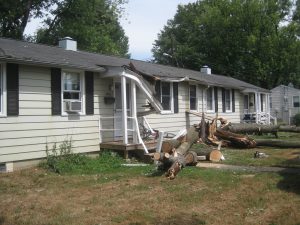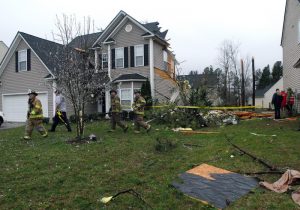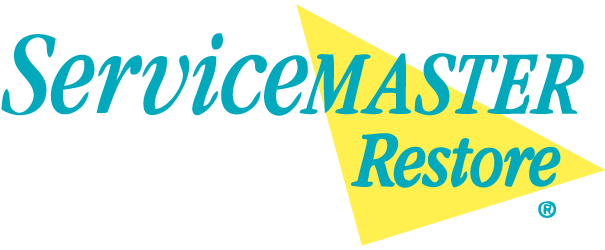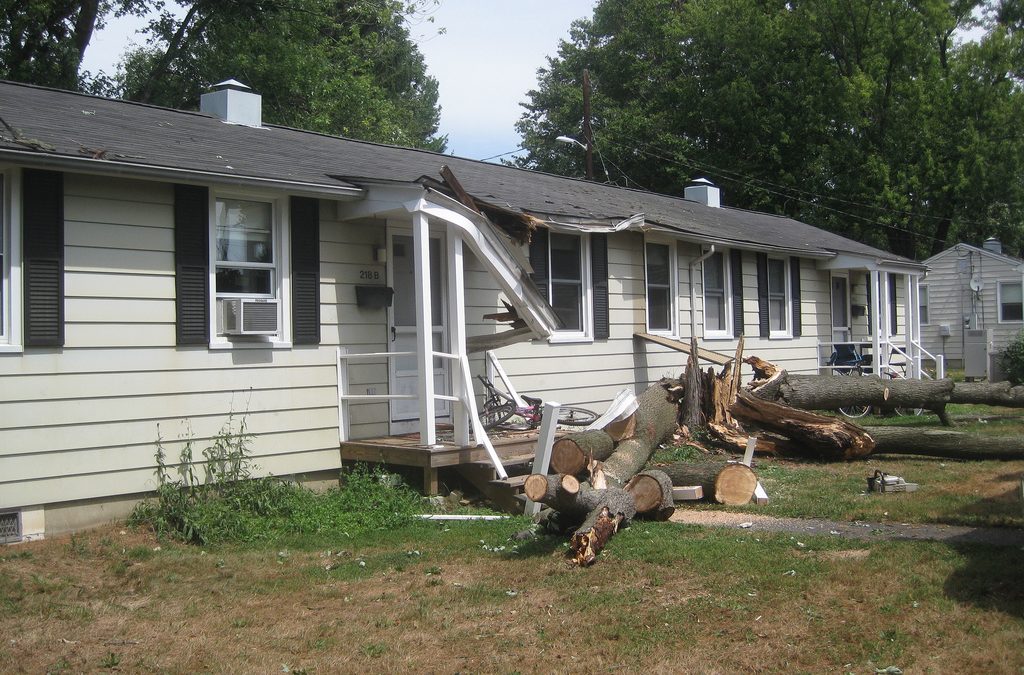While the autumn months in Illinois turn leaves crimson and yellow, the season also brings storms. A powerful storm can rip through neighborhoods, uprooting trees and damaging rooftops. The cleanup afterward can be a lengthy process, sometimes requiring professional help.
What types of storms affect Illinois?
Northern Illinois has recently undergone hail and wind damage. These storms unleashed hail in sizes larger than golf balls. Normally, hail is a springtime event. However, in September, hail at least two inches in diameter was reported. Winds at speeds of 60 to 85 mph also damaged utility poles.
Thunderstorms wreaked havoc this fall in the Chicago metro areas. Trees and power lines in DeKalb, Ogle and Winnebago Counties were damaged. Accompanying the storm was heavy rainfall, which produced two inches of rain within an hour. Flooding devastated McHenry and Cook Counties.
Recent afternoon and evening thunderstorms in southern Boone and McHenry Counties were supercells that produced multiple tornadoes. Extensive tee and structural damage occurred in parts of DeKalb, Ogle and Kane Counties. In the NWS Chicago County Warning Area, 10 tornadoes were confirmed.
- Ensure Safety

Rooftop damage may be the outcome of fallen trees, strong winds and flying debris
After tornadoes have touched down or wind storms downed trees, Illinois homeowners are left with extensive cleanup responsibilities. However, the first priority for every homeowner is safety. Noticing individuals who are injured or trapped under debris should prompt an immediate call to 911.
Once the flooding has subsided or the tornado has passed, it is critical that homeowners inspect the home prior to entering to ensure it is safe. Without first assessing the property, serious injury is possible. Wear long pants and closed toe shoes to minimize the risk of injury.
Cleaning up after a storm can extend for days or even weeks. Homeowners are advised to tackle small cleanup tasks on their own. When the devastation is excessive, storm damage cleanup professionals are better suited to safely remove large debris and reconstruct damaged parts of the home.
- Remove Mud and Debris
Floodwater can enter a property and introduce mud and debris. Mud that seeps into the exterior will lead to wood damage and mildew. A homeowner should start the cleanup by hosing down the mud. Shovel out the mud and use a mop to absorb and remove the remaining moisture.
- Replace Broken Windows
Windows might break when storms are severe. Homeowners are advised to apply tarp to the broken glass or board up the windows with plywood until the glass is repaired or replaced. Inside the home, sweep up the broken glass from the floors and nearby surfaces.
During disposal of the broken glass, double-bag the shards and place them in a hard-sided trash receptacle. In addition to shattered window panes, the window frames can break during severe storms. Holes or cracks in the window panes often result from small pieces of flying debris.
- Inspect and Repair the Roof
Rooftop damage may be the outcome of fallen trees, strong winds and flying debris. Examine the roof for signs of damage. Missing, curled or broken shingles are key signs of roof damage, as are missing eaves, flashing and gutters. Inside, damp spots on the ceiling signal water damage.
Early in the cleanup efforts, have the roof professionally inspected and repaired. Immediate repairs to the rooftop can prevent additional water intrusion and subsequent interior water damage. Plus, prompt roof repairs will protect the rest of the property from future storms.
- Remove Tree Branches

Cleaning up after a storm can extend for days or even weeks
Powerful winds can snap tree trunks or break branches. Be vigilant when power lines are located near toppled trees. Power lines hanging in a damaged tree can still be live. Do not attempt to remove trees or branches that have fallen across power lines. Instead, immediately call the utility company.
When the trees are a danger to people or the property, such as in the case of uprooted trees or cracked trunks, call a tree service for help. Homeowners may safely remove branches that are accessible from ground level. Do not climb a ladder to try to cut broken branches.
- Disinfect After Flooding
Severe storms can bring floodwaters into the home and cause more than physical destruction. Floodwaters may be contaminated with bacteria, hazardous waste and untreated sewage. People who are exposed to polluted floodwaters are susceptible to rashes, infections and various illnesses.
Cleanup of the floodwater begins with mopping the affected areas with detergent. The walls, floors, shelves and closets should be thoroughly washed and disinfected. Rather than risk the possibility of infection, discard food products that have come into contact with the contaminated floodwater.
- Discard Storm Debris
Curbside collections are ideal for disposing small tree limbs or yard trimmings. Large debris, such as tree limbs over four inches in diameter, may be picked up by local sanitation departments. Drop-off centers accept large amounts of storm debris. Dumpster rentals are the solution for bulk waste disposal.
Cleaning up after storm damage is best done with more than one pair of hands. In fact, a professional service, like ServiceMaster S&R Systems, is essential for home and business owners in the aftermath of water damage. Our experts quickly clean up properties affected by storms.
Water damage restoration services are critical once the storm has passed. Water damage rapidly spreads, as the moisture is absorbed into porous materials, like drywall, wood and furnishings. Without prompt, professional attention, water damaged materials will rot, warp or develop mold infestations.
ServiceMaster S&R Systems technicians use advanced machinery to extract standing water. Our powerful drying equipment whisks away moisture. Mold remediation is included in the event mold develops. We clean and repair damaged areas and fix the source of the moisture problem.
Whether your home or business is damaged by storms, burst pipes, faulty appliances or sewage backups, ServiceMaster S&R Systems is prepared to return your property to its pre-loss condition. We serve Naperville, Illinois, and its surrounding communities 24/7. Contact ServiceMaster S&R Systems for quality flood cleanup services today.

